6407 people reached on Lassi with Lavina FB page
Kinkini Dey Sarkar, Poonam Sharma and 6 others like it on Lassi with Lavina page
161 views on LinkedIn
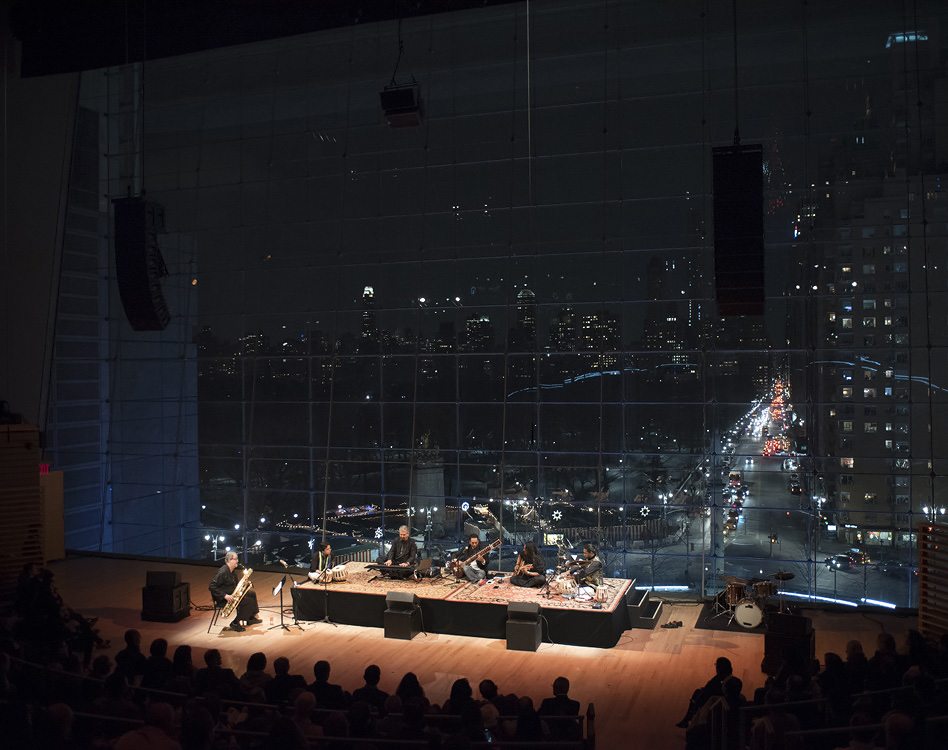
A New York Celebration – Indo-Jazz Festival!
Photos: Michael Toolan
[dropcap]C[/dropcap]an borders be crossed with impunity? Can diversity be celebrated with stamping feet and clapping hands? Can east and west embrace and the result be pure, unadulterated joy and energy? Sitting at Jazz at Lincoln Center’s Appel Room for the Indo-Jazz Festival was to see all this happen before your eyes, with the amazing glittering city of New York as its backdrop. Indeed, you could say the performers on stage had this frenetic, pulsating city as yet another performer – albeit a silent one – which enhanced the evening immensely.
From the floor to ceiling windows you saw the Manhattan skyline studded with lights and silhouetted skyscrapers and the cars dashing by in an unending stream. In the reflections juxtaposed by these gigantic windows, I seemed to see the traffic descending from the sky, and with the ebullient conversation of tabla and sitar, piano, guitar and saxophone, the entire evening had a joyful, surreal feel to it…a happiness which seemed to radiate the feeling that the world was about connections, not conflicts.
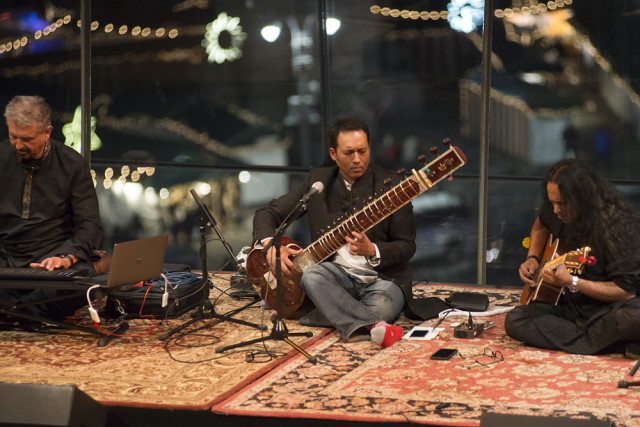
[dropcap]S[/dropcap]outh Asian Music and Arts Association (SAMAA) presented Indo Jazz Festival: a union between the two most improvisational genres of music, showcasing the talents of Melodic Intersect and Jazz Carnatica, which both have a mix of east and west musicians and instruments. It was a brave effort and asked about organizing this concert, Simmi Bhatia, the director of SAMAA said, “It’s intriguing to hear the two great music forms – Indian Classical and Jazz – come together. Both are based on improvisation, yet they are so different. Indian music is melody-driven and Jazz is based on harmony, so it is a challenge to beautifully incorporate the two and create beautiful music. Indian classical music is one of the oldest music forms while jazz is one of the youngest. So again, it is incredible to hear the two played together.”
Melodic Intersect, whose new album ‘Looking Forward’ has been included in this year’s Grammy Ballot for best World Music Album, comprises of Hidayat Khan (sitar, vocal), Enayat Hossain (tabla), Greg Hatza (piano), Joy Islam (guitar), Fred Koch (saxophone), Avirodh Sharma(world percussion).
Melodic Intersect
[dropcap]H[/dropcap]idayat Khan has been on both sides of the divide and as son of the legendary Ustad Vilayat Khan, he is the inheritor of a lineage spanning seven generations of classical musicians. Yet he has also been very much a part of the western music world, having performed in concerts with many noted artists including Ndugu Chancier, Ronnie Woods, Usher and Will.I.Am. Asked about the experience of performing with east and west musicians, Hidayat Khan says, “It’s the excitement of the unknown…the nervous energy in a positive way of creating something completely new and special. Meeting someone that I don’t personally know but yet, we speak a language that is so familiar. I love the feeling of unpredictability, and not knowing where this new connection will take us!”
He points out that this is no longer the 60’s and that the musicians have had a lot of exposure to varied music: “ Today’s musicians have an amazing understanding of each other’s disciplines – east or west) – it’s not an alien art form but there is still so much to learn from one another. I have been very fortunate, getting opportunities to work with the some of the greatest minds of music from across the globe from a very young age. What I’ve learned from this experience is that regardless of what your background maybe, deep down inside all the musicians are one big family because we all speak one language… Music.”
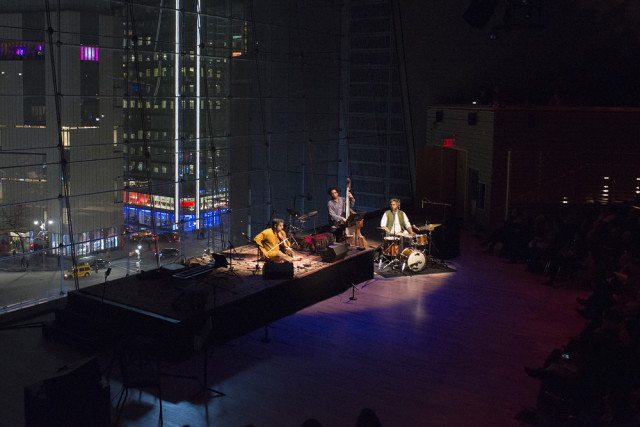
[dropcap]I[/dropcap]magine South Indian Carnatic music blended with jazz and you have the Arun Ramamurthy Trio (ART) comprising of Arun Ramamurthy(violin), Sameer Gupta (drums), Rashaan Carter (bass). These three instruments in the hands of these exceptional performers converse to give you a wonderful and enriching listening experience.
Asked about the joy of playing with musicians of different disciplines, Arun Ramamurthy says, ”I’ve been fortunate to play with musicians from a variety of traditions. It’s exciting to learn about different disciplines, as each has its own history, its own language. We try to understand each other’s perspective and create something new based on this understanding.
About 10 years ago, I met jazz pianist Marc Cary in NYC. We were playing a song that was based in Hindustani Raga Purya Dhanasri. Marc was phrasing this raga I knew so well in a way I had never heard before. It opened my eyes to the fact that perspective means everything, and we have to open ourselves up to see things from various angles.”
Arun Ramamurthy Trio
The Indo-Jazz Festival: Something Old, Something New
[dropcap]A[/dropcap]nd this is exactly what was happening at the Indo-Jazz Festival – something old, something new and all presented from a different perspective. For the audience too it was a learning experience and an adventure in music. As Simmi Bhatia points out, “Indian classical music has a very niche audience especially in the west, so I like to present it in a way which appeals to a wider audience. By incorporating Jazz, we widen our reach to the western audience as well as the younger generation of South Asian descent who find the concept appealing.”
And that brings us to the dance aspect of the Indo-Jazz Festival which presented a powerful piece by the Parul Shah Dance Company which has its roots in traditional Kathak dance but incorporates so many different forms of dance. This piece titled Enduring Silence choreographed by Parul Shah is a powerful testimony to women’s lives and is particularly pertinent in the current political climate in so many countries where women’s lives are disregarded and marginalized. Women endure physical hardship, violence, and inequality protected under the canopy of tradition.
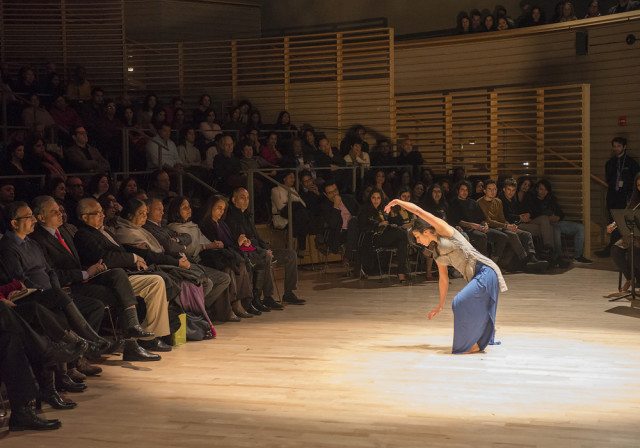
The Parul Shah Dance Company – Women Warriors
[dropcap]T[/dropcap]his is a powerful piece signifying the difficult lives of so many women through the body and gestures of one woman. It held the audience in its grip, the quicksilver Kathak footwork resounding against the wooden floor like a series of blows. For me, the stunning music by Trina Basu (violin), Amali Premawardhana (cello) and Mike Lukshis (tabla) added to the heartbreaking beauty and sadness of the dance.
Asked about the thoughts behind the creation of this lovely, complex piece, Shah said, “It was inspired by women particularly in Asia and Africa that endure physical hardship and violence and continue to endure and be resilient. This piece depicts not one but many women: a courtesan, a woman in a village: carrying pots, a woman forced to leave her child. All these women face violence and inequalities and are forced to lives that have not been chosen by them.”
She adds, “Physical/sexual abuse towards women is a universal plight in first world and third world nations and for the most part has been ignored and in some parts of the world, culturally seen as a norm. The beauty and power of art: music, dance, literature, films, and fine arts is that it can provide the spectator a lens to feel empathy and connection which is vital for change to occur.”
Parul Shah – Enduring Silence
[dropcap]I[/dropcap] asked Parul Shah what she would say to kathak purists who may quibble that this is not traditional kathak? She says, “I have been very fortunate to have studied with a guru, Padmabushan Kumudini Lakhia who is so well respected in the Indian classical dance world and is considered a pioneer for her own innovative choreography in the dance field. She has been very supportive of my work and has always told all her students to think and seek on their own.
The movement vocabulary that I am creating is coming from a truthful, authentic place within me. My vocabulary is not an amalgamation of many styles but comes from the application of my many years of training in Kathak to contemporary life today. It is a language that bridges the gap between my codified training in Kathak with my identity as a South Asian American women living in a vibrant, global city.”
What’s Happening in 2018
With 2018 just beginning, expect to see these wonderful artistes in a variety of venues.
[dropcap]H[/dropcap]idayat Khan is starting the year with a tour of India followed by performances in the US and Canada, and later performing in Europe and at Womad Festival. He’ll be performing with Melodic Intersect at the Kennedy Center Washington DC, Montreal Jazz Festival, Miami and other locations. I will also be releasing more albums with Melodic Intersect, classical and other collaborations as well.
[dropcap]A[/dropcap]run Ramamurthy also has a lot on his plate for the new year, bringing Arun Ramamurthy Trio to Fort Myers, FL on Feb 24 to perform for Raaga Inc. He is also the co-founder and Artistic Director of Brooklyn Raga Massive, an artist collective dedicated to cross-cultural dialogue through music, and will be doing several shows including a collaboration with West African singer Awa Sangho at Lincoln Center Atrium on Feb 9th. He will also be accompanying Sudha Raghunathan on Jan 28 in NJ in a pure Carnatic concert. After that he will touring with Ragamala Dance Company and Amir ElSaffar throughout 2018 for a show called Written in Water, in several cities from Abu Dhabi to Austin, and including the Kennedy Center in Washington DC.
[dropcap]P[/dropcap]arul Shah, who created ‘Enduring Silence’ a year ago is planning to expand the piece into an evening length work with 2 more sections that will explore the multifaceted identity of women. She says, “Now more than ever, where there is promise for real change in how women are perceived and respected, it is necessary to keep telling stories to promote awareness and challenge and question practices that have once been accepted culturally.”
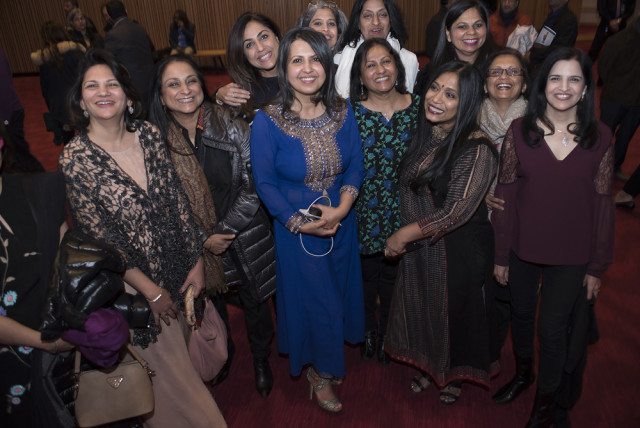
[dropcap]S[/dropcap]immi Bhatia and SAMAA plan to also continue to do exciting things in 2018. She says, “We are hoping to showcase Hindustani, Carnatic, Jazz, Folk. Depending on the funding and logistics, we would love to add different dance forms to it. We are hoping to continue the 2-day festival for the next few years. We could add plays and poetry to them as the festival grows. For the fall of 2018, we are planning a 2-day festival as a tribute to Ustad Vilayat Khan for his 75th birth anniversary.”
Talking of the Indo-Jazz Festival, Bhatia hopes to make it even better: “When the show is sold out and the audience appreciates the music, dance, the venue and the timely organized concert, it feels very fulfilling. Though I must add that it would be nice to get like-minded people to get involved and of course contribute to the Arts.”
Well, if you love the arts, 2018 might be the year to get involved, bring east and west together, celebrate diversity and the universality of dance and music!
Related Articles:
Shubha Mudgal & Bombay Jayashri – Confluence of Hindustani & Carnatic Music
Indian Classical Music – The Next Generation
